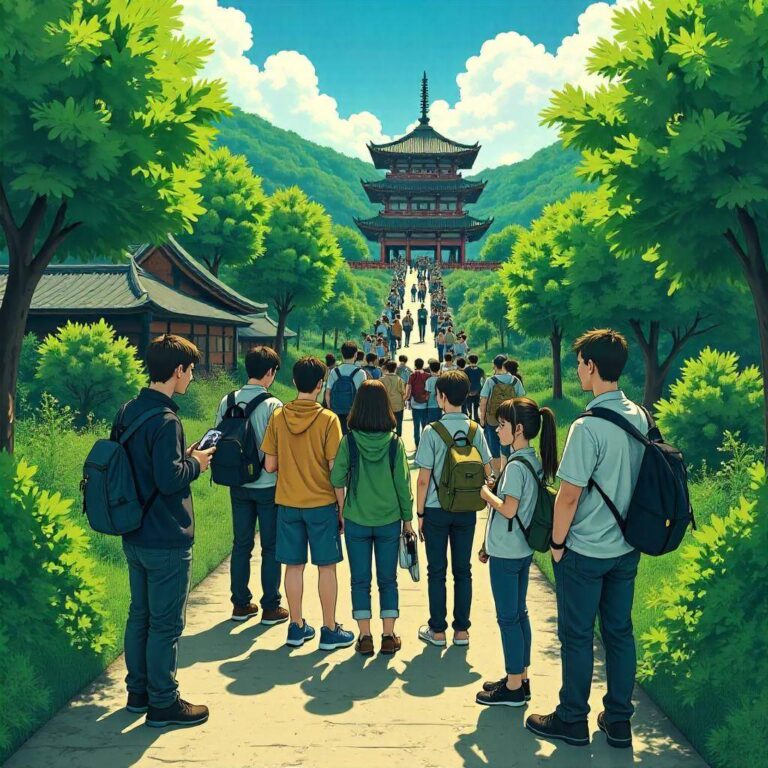Exploring Hokkaido: A Comprehensive Travel Guide Hokkaido, Japan’s northernmost island, is a treasure trove of natural beauty, cultural richness, and unique experiences. From stunning landscapes to flavorful cuisine and vibrant festivals, the island has something to offer for every traveler.
In this detailed guide, we’ll cover everything you need to know to make the most of your Hokkaido adventure, including practical logistics, cultural insights, insider tips, budget considerations, timing recommendations, alternative options, and step-by-step planning advice. Understanding Hokkaido’s Appeal Hokkaido is often seen as a hidden gem among international travelers. The island’s vast landscapes are dotted with hot springs, ski resorts, and flower fields that bloom vibrantly in summer. Its cultural heritage is influenced by the indigenous Ainu people, as well as immigrants from various parts of Japan. This combination provides a unique experience that is distinctly different from the rest of Japan. Natural Wonders Visitors to Hokkaido can explore a variety of natural wonders, including: – Shiretoko National Park: A UNESCO World Heritage site known for its stunning wildlife, including bears and rare birds. – Daisetsuzan National Park: The largest national park in Japan, offering hiking trails, volcanic craters, and stunning mountain views. – Biei and Furano: Famous for their picturesque flower fields, especially lavender, which bloom in July. Cultural Insights Hokkaido’s culture is a blend of traditional Japanese and Ainu influences. Travelers can experience this unique culture through traditional crafts, music, and food. Be sure to try local dishes such as fresh seafood, miso ramen, and dairy products like cheese and ice cream. Practical Logistics Getting to Hokkaido The primary gateway to Hokkaido is New Chitose Airport (CTS), located near Sapporo. It’s well-connected to major cities in Japan, including Tokyo, Osaka, and Nagoya. – Air Travel: Flights from Tokyo to New Chitose Airport take approximately 1.5 hours. Budget airlines like Peach Aviation and Vanilla Air offer affordable options. – Train Travel: If you prefer the scenic route, take the Hokkaido Shinkansen from Tokyo to Hakodate, then transfer to local trains to reach your destination. Transportation within Hokkaido Once in Hokkaido, public transportation is reliable and efficient. Train Services – Hokkaido Railway: Covers many major cities and scenic areas. The Seishun 18 Ticket offers unlimited travel for five days, making it a budget-friendly option for travelers. – Trains to Note: The Limited Express Okhotsk connects Sapporo to Abashiri, while the Limited Express Lilac travels from Sapporo to Asahikawa. Buses and Car Rentals – Buses: Hokkaido’s bus network is extensive, serving areas that may not be accessible by train. For example, local buses operate in rural areas and national parks. – Car Rentals: Renting a car is a great option for exploring remote areas at your own pace. Major rental companies are available at the airport and in major cities. Accommodation Options Hokkaido offers a wide range of accommodation options: – Hotels & Ryokans: In cities like Sapporo and Otaru, you’ll find everything from luxury hotels to traditional ryokans (Japanese inns). – Guesthouses & Hostels: For budget travelers, guesthouses and hostels can be found in popular areas, providing opportunities to meet fellow travelers. – Camping: Nature lovers can camp in designated areas within national parks, offering a truly immersive experience. Cultural Insights Understanding Hokkaido’s culture can enhance your travel experience. Respect for Ainu Culture The Ainu people are the indigenous inhabitants of Hokkaido. Engaging with their culture through museums, workshops, and local festivals can provide a deeper appreciation of the land. Local Etiquette – Onsen Etiquette: If you visit a hot spring, remember to wash your body before entering the bath and refrain from bringing towels into the water. – Dining Etiquette: It’s common to say “Itadakimasu” before a meal and “Gochisosama deshita” afterward to show gratitude. Insider Tips Hidden Gems – Shakotan Peninsula: Known for its stunning sea views and hidden beaches, this area is less frequented by tourists. – Sounkyo Gorge: A beautiful gorge with stunning waterfalls and hiking trails, perfect for those who love the outdoors. – Kushiro Shitsugen National Park: Home to Japan’s largest wetland, it’s a fantastic spot for birdwatching and experiencing unique ecosystems. Timing Recommendations – Winter (December to February): Ideal for skiing and snowboarding in resorts like Niseko and Furano. Don’t miss the Sapporo Snow Festival in February. – Spring (March to May): Cherry blossoms bloom; great time for hanami (flower viewing) in parks. – Summer (June to August): Pleasant weather suitable for outdoor activities and flower viewing. – Fall (September to November): Enjoy the stunning fall foliage, especially in Daisetsuzan National Park. Budget Considerations Cost Breakdown – Airfare: Flights from Tokyo to Hokkaido range from $100 to $300, depending on the season and airline. – Accommodation: Budget options start from $30 per night at hostels, mid-range hotels are around $100, and luxury options can exceed $300. – Food: Expect to spend about $10-$15 per meal at casual restaurants, while fine dining can range from $50 and up. – Transportation: Budget around $15-$30 for train fares between major cities. Car rentals start at around $50 per day. Step-by-Step Planning Advice Step 1: Determine Your Travel Dates Consider the activities you want to do and research seasonal events. For example, if skiing is a priority, winter is the best time to visit. Step 2: Book Flights and Accommodation Early Book your flights and accommodations well in advance, especially during peak seasons like winter and summer, to secure the best deals. Step 3: Create an Itinerary Plan your itinerary based on your interests. Mix urban experiences in Sapporo with outdoor adventures in national parks. Step 4: Research Transportation Options Determine whether you will rely on public transport or rent a car. If you opt for a rental, book in advance and familiarize yourself with Japanese driving laws. Step 5: Pack Accordingly Consider the season and activities you will be doing. If visiting in winter, pack warm clothing and gear for skiing. In summer, light layers for warmth can be useful for the cooler evenings. Common Mistakes to Avoid 1. Underestimating Travel Times: Distances in Hokkaido can be deceiving. Factor in travel time, especially if you’re moving between remote areas. 2. Ignoring Weather Variability: Weather can change rapidly, especially in mountainous regions. Pack for various conditions, regardless of the season. 3. Skipping Local Experiences: Don’t just stick to tourist spots. Explore local markets, small towns, and cultural festivals for a richer experience. Accessibility Options Hokkaido is becoming increasingly accessible for travelers with disabilities. Many train stations and public facilities are equipped with ramps and elevators. However, some rural areas may have limited accessibility. It’s advisable to check in advance. Conclusion Hokkaido is a diverse and captivating destination that offers an authentic Japanese experience away from the bustling crowds of Tokyo and Kyoto. By planning ahead and immersing yourself in local culture, you can uncover the hidden corners of this beautiful island. Whether you’re seeking adventure, relaxation, or culinary delights, Hokkaido should be on your travel itinerary. With this guide in hand, you’re well-equipped to embark on a memorable journey through Japan’s northern paradise. Happy travels!

Posted inJapan Trip


